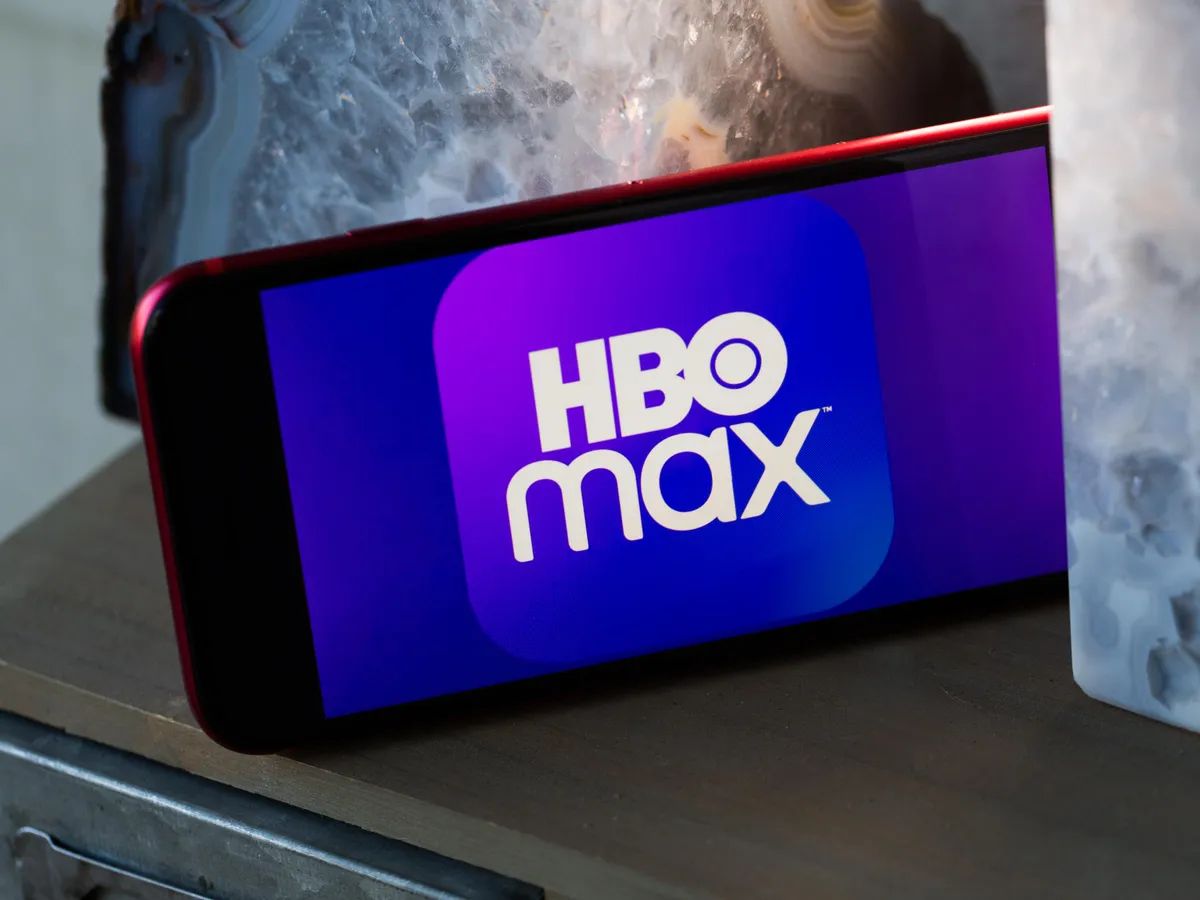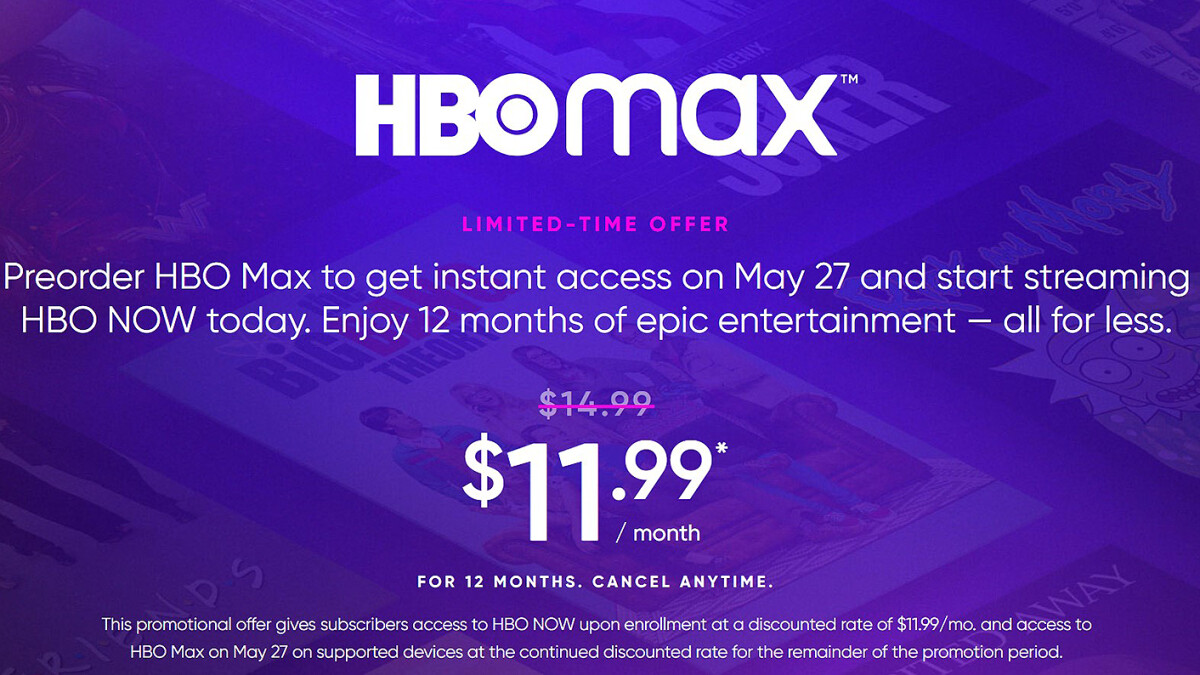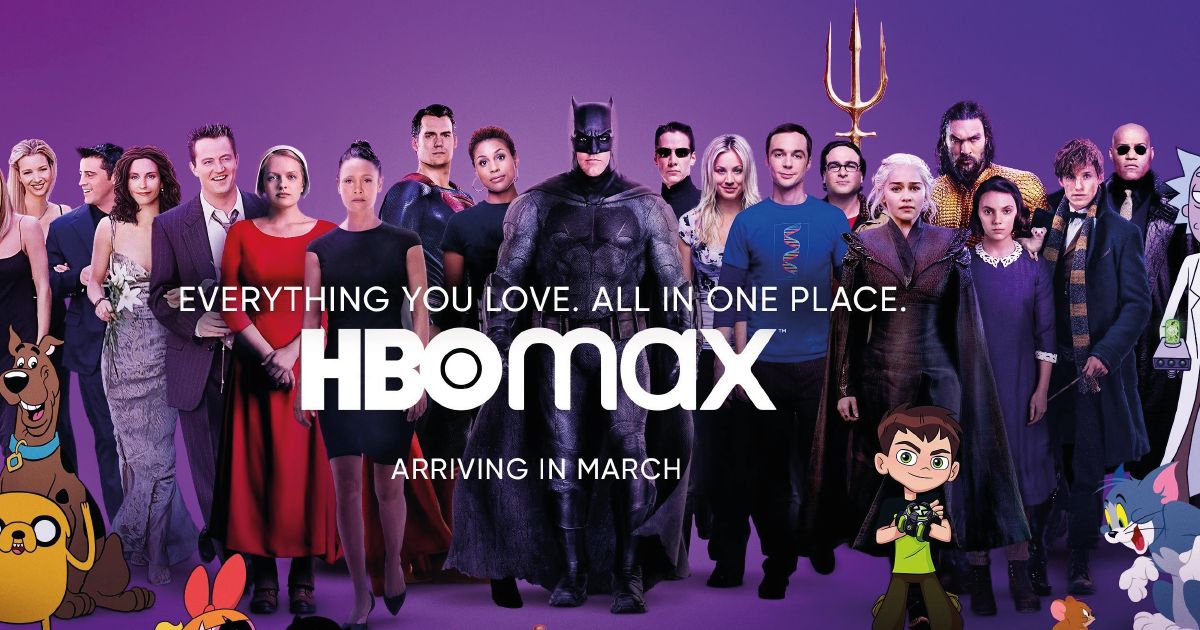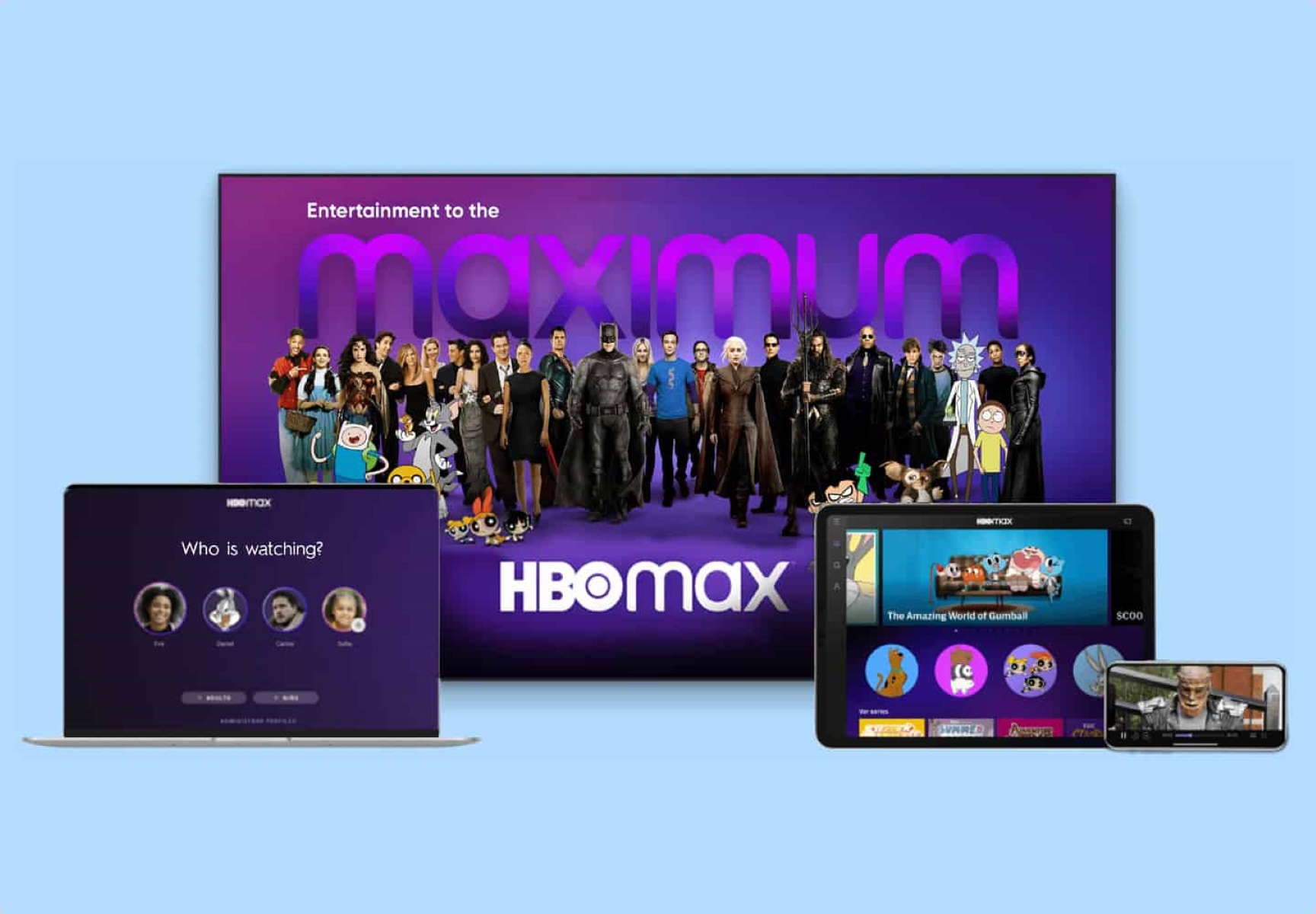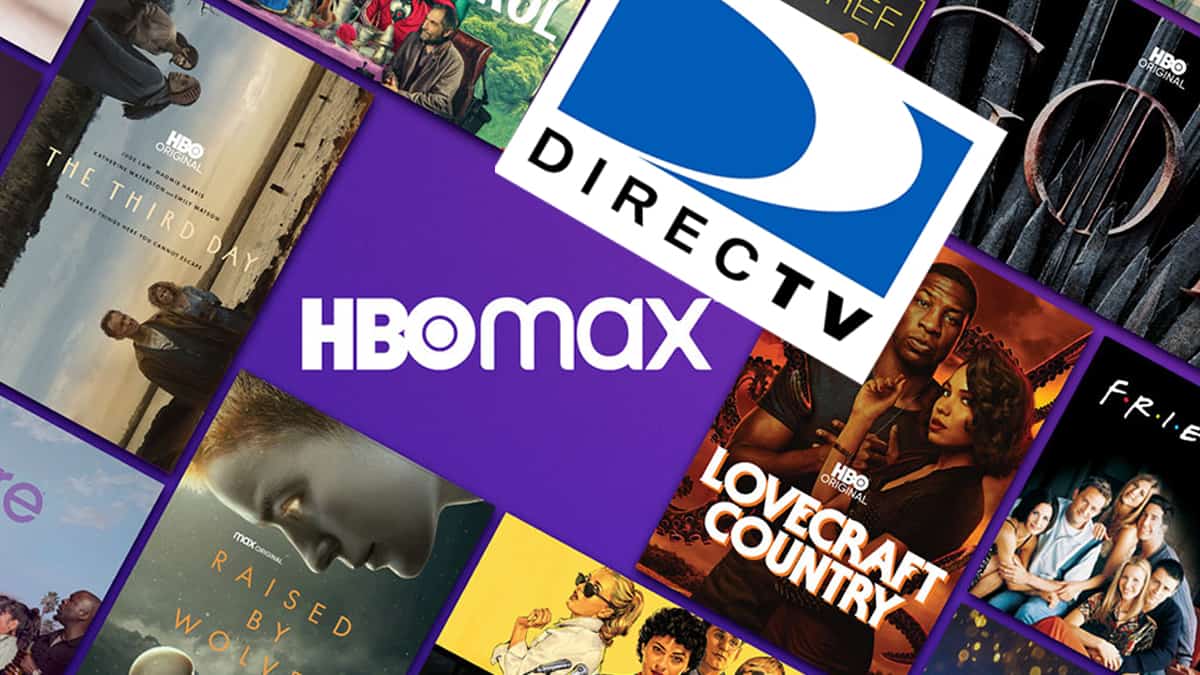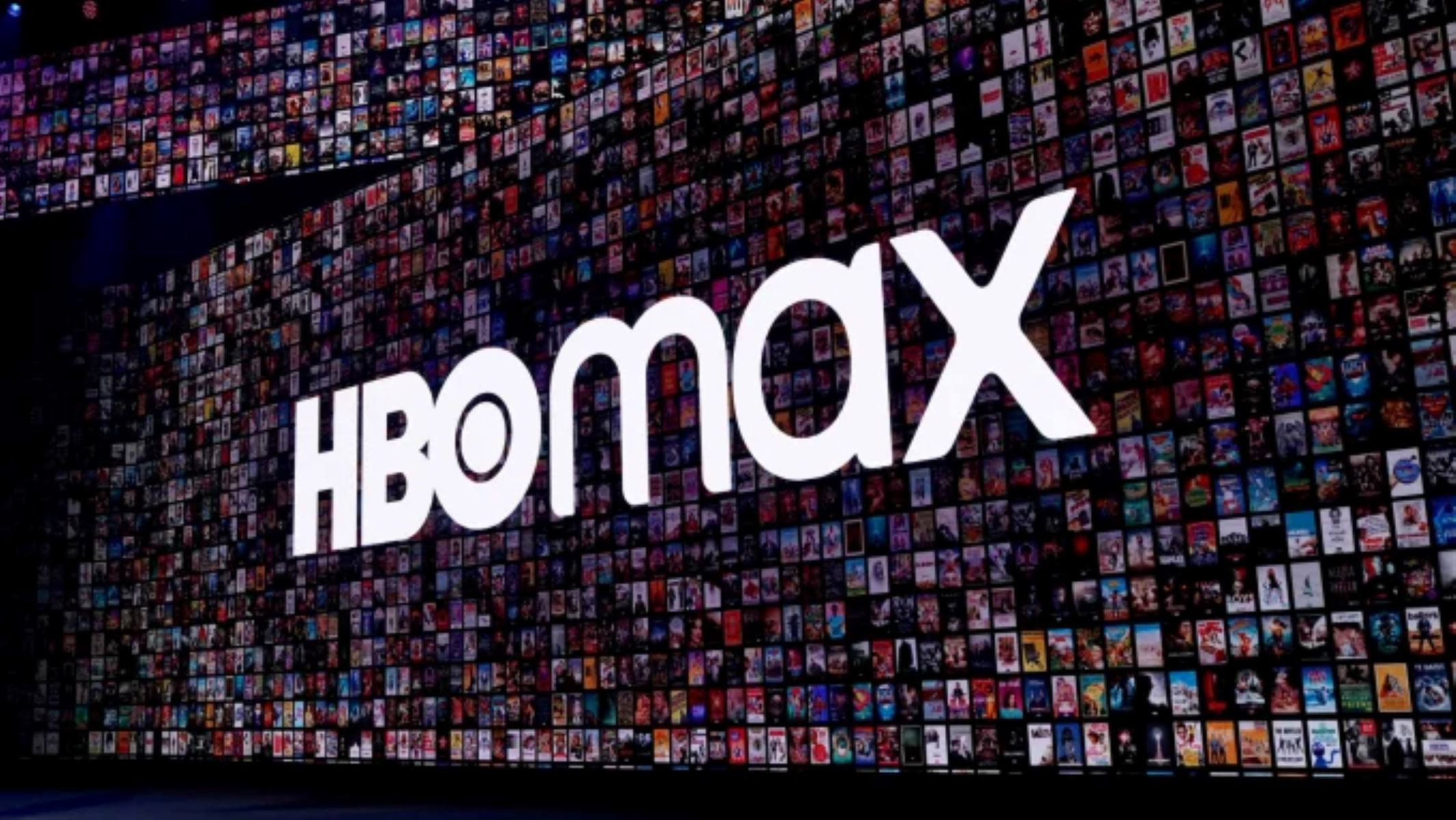Introduction
When it comes to streaming services, HBO Max has been making waves in the ever-growing market. Launched on May 27, 2020, HBO Max entered a highly competitive landscape, with giants like Netflix, Hulu, and Amazon Prime Video dominating the space. Since its inception, HBO Max has gained significant attention and has become a leading player in the streaming industry.
As a direct-to-consumer service, HBO Max offers subscribers access to a vast library of content, from hit shows like Game of Thrones and Friends to popular movies and exclusive programming. It aims to provide users with a comprehensive entertainment experience, combining the extensive HBO catalog with WarnerMedia’s impressive content portfolio.
HBO Max’s entrance into the streaming realm was highly anticipated, with media enthusiasts eager to see how it would fare against established competitors. The service offers a variety of subscription options, including ad-supported and ad-free plans, allowing users to choose the plan that best fits their needs.
With a strong focus on original programming and a commitment to delivering high-quality content, HBO Max has set itself apart from other streaming services. Its strategy to invest in a diverse range of genres and tap into the creativity of renowned filmmakers and artists has garnered a significant following.
However, the success of any streaming service is determined by its subscriber count. This article delves into the factors influencing HBO Max’s subscriber count, including its original programming, the impact of COVID-19, and a comparison to its competitors. Additionally, it explores the current subscriber growth of HBO Max and provides projections for the future.
So, how many subscribers does HBO Max have? Let’s dive into the fascinating world of streaming and uncover the secrets behind HBO Max’s rise to prominence.
The Launch of HBO Max
HBO Max made its highly anticipated debut on May 27, 2020, marking the entry of WarnerMedia into the streaming service landscape. The launch was a strategic move by WarnerMedia to leverage the popularity of the HBO brand and compete with other established streaming giants.
Prior to HBO Max, HBO had already established itself as a premium cable network, known for its critically acclaimed original programming. By expanding into the streaming space, HBO aimed to cater to a wider audience and provide subscribers with a more extensive library of content.
One of the key elements of HBO Max’s launch strategy was the inclusion of not only HBO’s renowned shows but also a vast array of additional content from WarnerMedia’s extensive catalog. Subscribers gained access to a wealth of popular TV series, movies, and exclusive programming, promising an unparalleled entertainment experience.
Furthermore, HBO Max struck several licensing deals to secure the rights to beloved sitcoms like Friends and The Big Bang Theory, attracting fans of these iconic shows to the platform. This move proved to be strategically significant, as it helped differentiate HBO Max from competitors and appeal to a broader demographic.
However, the launch of HBO Max was not without its challenges. One of the primary obstacles faced was the confusion surrounding the existing HBO services. The streaming landscape already included HBO Go and HBO Now, which created a bit of confusion among potential users. To streamline their offering, HBO phased out HBO Go and repositioned HBO Now as simply HBO.
In an effort to promote brand recognition and awareness, WarnerMedia embarked on an extensive marketing campaign. They utilized various channels, including television ads, digital advertising, and strategic partnerships, to generate buzz and attract subscribers. Additionally, HBO Max partnered with popular influencers and celebrities to create original promotional content, further increasing its visibility in the market.
The launch of HBO Max was met with a mix of excitement and skepticism. Industry experts and consumers alike had high expectations for the streaming service, given HBO’s reputation for producing high-quality content. The success of the launch would ultimately hinge on the ability of HBO Max to deliver on its promise of a robust and immersive streaming experience.
In the next sections, we will explore the factors that have influenced HBO Max’s subscriber count and the strategies they implemented to encourage users to choose their platform over competitors. Let’s dive deeper into the world of HBO Max and uncover the secrets behind its growing success.
Factors Influencing HBO Max’s Subscriber Count
Several factors have played a crucial role in determining the subscriber count of HBO Max since its launch. Understanding these factors provides insight into how HBO Max has managed to attract a significant number of subscribers and compete in the highly competitive streaming market.
1. Original Programming and Content: HBO Max’s success can be attributed to its focus on delivering a vast range of high-quality original programming. The platform has invested heavily in producing exclusive shows, documentaries, and movies, featuring renowned directors, actors, and creators. This commitment to original content has been a major driving force for subscribers, as it offers unique and compelling entertainment options that cannot be found elsewhere.
2. Variety of Content: In addition to its original programming, HBO Max boasts an extensive library of content from HBO and WarnerMedia. Subscribers have access to a diverse range of genres, including drama, comedy, sci-fi, and documentaries. The inclusion of iconic shows like Game of Thrones, Friends, and The Sopranos, along with blockbuster movies and popular franchises, has significantly contributed to attracting a broad audience base.
3. Partnerships and Licensing Agreements: HBO Max has strategically formed partnerships and secured licensing agreements to offer exclusive content on its platform. The inclusion of beloved series like Friends and The Big Bang Theory, which were previously not available on streaming platforms, has enticed fans to subscribe to HBO Max. These partnerships have helped differentiate the service and tap into the nostalgia factor, appealing to both new and existing fans of these iconic shows.
4. User Experience and Interface: A seamless and user-friendly interface is crucial for any streaming service, and HBO Max has prioritized enhancing the user experience. The platform offers personalized recommendations, intuitive navigation, and convenient features like profiles and offline downloads. By providing a smooth and enjoyable streaming experience, HBO Max has managed to retain subscribers and encourage them to continue using the service.
5. Integration with HBO and WarnerMedia: HBO Max’s integration with the existing HBO and WarnerMedia ecosystem has been a contributing factor to its subscriber growth. The transition from HBO Go and HBO Now to HBO Max was seamless for HBO subscribers, making it an attractive upgrade. Additionally, the inclusion of WarnerMedia content and collaborations with other divisions within the company, such as Warner Bros. and DC Comics, has expanded the appeal of HBO Max to a wider audience.
6. Competitive Pricing and Promotions: HBO Max offers competitive pricing options, including ad-supported plans, to cater to different budget preferences. The platform also provides various promotional offers, discounted bundles, and free trial periods to incentivize users to subscribe. These pricing strategies have attracted new customers and encouraged them to choose HBO Max over its competitors.
The aforementioned factors have collectively contributed to the growth of HBO Max’s subscriber count. By focusing on original content, offering a diverse range of programming, forming strategic partnerships, enhancing user experience, integrating with existing platforms, and employing competitive pricing strategies, HBO Max has established itself as a formidable player in the streaming industry.
In the following sections, we will explore the impact of COVID-19 on HBO Max’s subscriber count and compare it to other prominent streaming services. Let’s delve further into the fascinating journey of HBO Max and the challenges it has faced along the way.
Original Programming and Content
One of the key factors that have contributed to the success of HBO Max is its focus on original programming and high-quality content. HBO Max has invested heavily in creating exclusive shows, documentaries, and movies, featuring some of the industry’s most talented directors, actors, and creators. This dedication to original content has not only set the platform apart from its competitors but also attracted a significant number of subscribers.
HBO has long been known for its critically acclaimed original programming, with shows like Game of Thrones, The Sopranos, and Westworld becoming cultural phenomena. With the launch of HBO Max, the streaming service has continued this tradition, delivering a diverse range of series that cater to a broad audience.
Original dramas, such as Succession and Chernobyl, have gained widespread acclaim for their compelling storylines, complex characters, and exceptional performances. These shows have not only attracted new subscribers but also kept existing HBO fans engaged and eager for more.
HBO Max has also ventured into the realm of comedy with original series like Insecure and Curb Your Enthusiasm. These shows have resonated with audiences, showcasing HBO Max’s ability to deliver top-notch humor and provide a platform for diverse comedic voices.
In addition to scripted programming, HBO Max has expanded its original content offerings to include documentaries and docuseries. The platform has delved into thought-provoking subjects, offering viewers a deep dive into real-life events, social issues, and inspiring stories. Documentaries like The Vow and Heaven’s Gate: The Cult of Cults have captivated audiences with their compelling narratives and meticulous storytelling.
HBO Max’s commitment to artistic storytelling extends beyond television shows. The streaming service has also embraced the world of movies, producing original films that push boundaries and showcase the talent of acclaimed filmmakers. Films like Judas and the Black Messiah, An American Pickle, and Let Them All Talk have showcased the diversity and depth of HBO Max’s original film library.
Furthermore, HBO Max hasn’t just relied on its own original content. The streaming service has also made strategic acquisitions, securing the rights to highly anticipated movies and collaborating with renowned filmmakers. This approach has allowed HBO Max to offer a comprehensive and diverse range of content that appeals to various tastes and preferences.
The emphasis on original programming and content sets HBO Max apart from its competitors. By investing in top-tier talent, exploring a wide range of genres, and delivering compelling narratives, HBO Max has positioned itself as a hub for premium entertainment. Subscribers are drawn to the platform because of its commitment to high-quality content that consistently pushes boundaries and satisfies their voracious appetite for engaging storytelling.
In the next sections, we will explore the impact of COVID-19 on HBO Max’s subscriber count and compare its performance to other major streaming services. The journey of HBO Max continues to be shaped by its original programming, compelling content, and its ability to adapt to the evolving streaming landscape.
Impact of COVID-19
The global COVID-19 pandemic has had a profound impact on various industries, including the streaming sector. HBO Max, like other streaming services, has experienced both challenges and opportunities as a result of the pandemic.
One of the significant effects of COVID-19 on HBO Max is the surge in demand for streaming content. As people around the world stayed indoors and sought entertainment options from the comfort of their homes, streaming services experienced a significant increase in usage. This presented an opportunity for HBO Max to attract new subscribers and retain existing ones.
With the postponement and cancelation of many film and TV productions, HBO Max had to adapt its content strategy. The streaming service focused on promoting its existing library of shows, movies, and documentaries to ensure a steady flow of fresh content for its subscribers. Additionally, HBO Max expedited the release of certain highly anticipated titles, offering exclusive premieres and early access to feature films that were originally planned for theatrical release.
The pandemic also disrupted the traditional film distribution model, leading to the launch of “Hybrid Release” strategies. HBO Max embraced this trend, offering select movies simultaneously in theaters and on its streaming platform for a limited time. This hybrid approach aimed to cater to different viewer preferences and provided an additional incentive for movie enthusiasts to subscribe to HBO Max.
On the other hand, the production delays caused by the pandemic impacted the release schedule of new original content. While video streaming platforms faced challenges related to content production, HBO Max managed to maintain a steady stream of new shows and movies, thanks to its extensive library of existing content.
The closure of movie theaters and the shift towards streaming services also affected the distribution landscape. With traditional movie studios reconsidering their release strategies, HBO Max seized the opportunity to secure exclusive deals and partnerships. For example, Warner Bros., the parent company of HBO Max, announced that its entire 2021 movie slate would be simultaneously released on HBO Max and in theaters, providing a significant boost to the streaming service.
Furthermore, the pandemic necessitated changes in marketing and promotional strategies. HBO Max adapted its advertising campaigns to resonate with audiences who were experiencing the effects of the pandemic. They focused on highlighting the comfort and escapism that streaming services offer during challenging times, positioning HBO Max as a source of entertainment and relaxation for viewers amidst the uncertainty of the world.
In summary, COVID-19 has had a mixed impact on HBO Max. On one hand, the increased demand for streaming content presented an opportunity for subscriber growth. On the other hand, the production delays and disruptions in the entertainment industry required HBO Max to adjust its content strategies and embrace the hybrid release model. Despite the challenges, HBO Max has managed to navigate the pandemic’s impact and continues to captivate audiences with its engaging content offerings.
In the upcoming sections, we will compare HBO Max’s subscriber count to its competitors and explore the future growth and projections for the streaming service. The evolving landscape of streaming and the unique position of HBO Max in the industry make for an intriguing journey of growth and adaptation.
Comparison to Competitors
In the highly competitive streaming market, HBO Max faces stiff competition from established players like Netflix, Hulu, and Amazon Prime Video, as well as newer entrants like Disney+ and Apple TV+. Let’s take a closer look at how HBO Max stacks up against its competitors.
1. Content Library: When it comes to the breadth and depth of content offerings, Netflix reigns supreme. With a vast library of licensed and original content, including popular TV shows, movies, and documentaries, Netflix has built a loyal subscriber base. However, HBO Max’s original programming and exclusive licensed content from HBO and WarnerMedia, combined with its diverse range of genres, provide a compelling alternative to Netflix’s dominance.
2. Original Programming: HBO Max is known for its commitment to high-quality original programming, putting it in direct competition with platforms like Hulu and Amazon Prime Video. Hulu has gained recognition for its diverse content, including award-winning series like The Handmaid’s Tale and critically acclaimed documentaries. Meanwhile, Amazon Prime Video has made strides with shows like The Marvelous Mrs. Maisel and exclusive movie deals. HBO Max’s emphasis on prestigious original shows, coupled with its extensive library, positions it as a formidable contender in this space.
3. Brand Recognition: Disney+ has a significant advantage over HBO Max in terms of brand recognition and fandom. Benefiting from the vast Disney, Pixar, Marvel, and Star Wars catalog, Disney+ captured the attention of both new and existing fans. HBO Max, while not lacking in brand recognition due to the strength of HBO, has had to work harder to differentiate itself and attract a wider audience beyond the HBO loyalists.
4. Pricing and Bundles: HBO Max’s pricing options are comparable to other streaming services. However, the platform offers a unique advantage with its ad-supported plan, which allows users to access content at a lower cost. Additionally, HBO Max has bundled its service with other WarnerMedia properties, such as AT&T wireless and internet plans, providing added value for subscribers. This strategy sets HBO Max apart from its competitors and appeals to those looking for affordable streaming options.
5. User Experience and Features: When it comes to user experience, HBO Max has taken steps to enhance its platform. The streaming service offers a user-friendly interface, personalized recommendations, and convenient features like profiles and offline downloads. Although Netflix and Amazon Prime Video have mastered the art of user experience, HBO Max’s intuitive navigation and visually appealing design make it a worthy contender.
6. International Availability: While Netflix and Amazon Prime Video have a global presence, HBO Max has a more limited international footprint. The service currently operates in the United States and a few select countries. This limited availability has affected HBO Max’s reach and subscriber count compared to its globally available competitors.
In summary, HBO Max faces fierce competition in the streaming market, but it has carved out its own niche by leveraging its extensive content library, original programming, and unique features. While Netflix and Disney+ have built strong brand recognition, HBO Max’s focus on quality content and differentiated offerings have positioned it as a formidable contender. Ultimately, the streaming landscape continues to evolve, and HBO Max’s ability to adapt and innovate will be crucial in its ongoing competition with other leading streaming services.
In the following sections, we will explore HBO Max’s subscriber growth and projections, as well as summarize the key factors that have contributed to its success. The dynamic nature of the streaming industry ensures an exciting future for HBO Max and its ongoing battle with its competitors.
Subscriber Growth and Projections
Since its launch in May 2020, HBO Max has experienced steady subscriber growth, establishing itself as a major player in the streaming industry. While exact subscriber numbers are closely guarded, industry reports estimate that HBO Max has surpassed the 40 million subscriber mark.
The success of HBO Max can be attributed to several factors. Its strong brand recognition and association with the respected HBO network have played a significant role in attracting existing HBO subscribers to the streaming service. Moreover, HBO Max’s emphasis on original programming and exclusive licensed content has helped differentiate it from its competitors and entice new subscribers.
The COVID-19 pandemic has also been a driving force behind the growth of HBO Max’s subscriber base. With people spending more time at home and seeking entertainment options, the demand for streaming services skyrocketed. HBO Max capitalized on this trend by offering a wide range of content to satisfy diverse viewing preferences, ultimately leading to an increase in subscribers.
Looking ahead, the future growth and projections for HBO Max remain promising. The streaming service continues to invest heavily in original programming, striking deals with renowned creators and securing exclusive content rights. These efforts are expected to continue attracting new subscribers who are drawn to the platform’s high-quality and diverse content offerings.
Furthermore, as WarnerMedia expands HBO Max’s international availability, there is immense potential for subscriber growth in previously untapped markets. The expansion into new territories, coupled with the global appeal of HBO’s original programming, is expected to contribute significantly to HBO Max’s overall subscriber count.
As HBO Max benefits from the overall growth of the streaming market, it will face increasing competition from both established players and emerging streaming services. However, with its strong content library, original programming, and focus on user experience, HBO Max is well-positioned to maintain its subscriber growth and continue attracting audiences of all ages.
Industry analysts project that HBO Max’s growth will be further fueled by the launch of highly anticipated movies and exclusive original programming. The streaming service’s decision to release its entire 2021 movie slate simultaneously on HBO Max and in theaters is expected to drive a surge in subscriptions, as viewers appreciate the option to enjoy new releases from the comfort and safety of their homes.
While the streaming landscape remains fiercely competitive, HBO Max’s ability to adapt, innovate, and consistently deliver premium content will be crucial in retaining its subscriber base and achieving further growth. By staying attuned to viewer preferences, embracing emerging technologies, and delivering engaging storytelling, HBO Max is well-positioned to continue capturing a share of the streaming market and attracting a loyal and expanding subscriber base.
In the final section of this article, we will summarize the key factors that have influenced HBO Max’s subscriber count and reflect on its journey in the competitive streaming industry.
Conclusion
HBO Max has emerged as a major player in the highly competitive streaming industry since its launch in May 2020. With a strong focus on original programming, a diverse content library, and a commitment to delivering high-quality entertainment, HBO Max has attracted a substantial number of subscribers.
The success of HBO Max can be attributed to various factors. Its emphasis on original shows, documentaries, and films has set it apart from its competitors, while the inclusion of popular licensed content like Friends has appealed to a broad audience base. HBO Max’s seamless integration with the existing HBO ecosystem and its dedication to providing a top-notch user experience have also contributed to its growth.
The impact of the COVID-19 pandemic has further influenced HBO Max’s subscriber count. As people increasingly turned to streaming services for entertainment during lockdowns, HBO Max seized the opportunity to provide a diverse range of content, attracting new subscribers and retaining existing ones. The hybrid release strategy, which offered select movies simultaneously in theaters and on HBO Max, added value and convenience for viewers during these challenging times.
Looking ahead, HBO Max’s future growth prospects are promising. As the streaming service continues to invest in original programming, strike exclusive deals, and expand its international availability, there is significant potential for subscriber growth. HBO Max’s ability to adapt and innovate, coupled with its competitive pricing options and user-friendly interface, positions it well in the evolving streaming landscape.
In the fiercely competitive streaming market, HBO Max faces challenges from established players like Netflix and Disney+, as well as emerging services. However, HBO Max’s strong brand recognition, diverse content offerings, and commitment to delivering captivating storytelling make it a force to be reckoned with.
As HBO Max continues its journey, it will need to remain agile, leverage its brand strength, and focus on creating compelling and innovative content to ensure sustained subscriber growth. By staying true to its core values and listening to the preferences of its audience, HBO Max has the potential to solidify its position as a leading streaming service for years to come.







